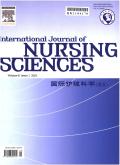Time series analysis of outpatient blood collection visits: Fluctuation patterns and nursing staff allocation optimization
IF 3.1
3区 医学
Q1 NURSING
引用次数: 0
Abstract
Objectives
This study aimed to explore the characteristics of outpatient blood collection center visit fluctuation and nursing workforce allocation based on a time series model, and the application effect was evaluated.
Methods
To enhance the efficiency of phlebotomy at the hospital outpatient window and improve patient satisfaction, the First Affiliated Hospital with Nanjing Medical University implemented a time series analysis model in 2024 to optimize nursing staff allocation. The management team was led by a head nurse of the outpatient blood collection department with extensive experience. It included one director of the nursing department, six senior clinical nurses, one informatics expert, and one nursing master’s degree holder. Retrospective time-series data from the hospital’s smart blood collection system (including hourly blood collection volumes and waiting times) were extracted between January 2020 and December 2023. Time series analysis was used to identify annual, seasonal, monthly, and hourly variation patterns in blood collection volumes. Seasonal decomposition and the Autoregressive Integrated Moving Average Model (ARIMA) were employed to forecast blood collection fluctuations for 2024 and facilitate dynamic scheduling. A comparison was conducted to evaluate differences in blood collection efficiency and patient satisfaction before (January–June 2023) and after (January–June 2024) implementing the dynamic scheduling model based on the time series analysis and forecasting.
Results
Visit volumes showed periodicity and slow growth, peaking every second and third quarter of the year and daily at 8:00–9:00 a.m. and 2:00–3:00 p.m. The ARIMA model demonstrated a good fit (R2 = 0.692, mean absolute percentage error = 8.28 %). After adjusting the nursing staff allocation based on the fluctuation characteristics of the number of phlebotomy per hour in the time series analysis model, at the peak period of the blood collection window, at least three nurses, one mobile nurse and two volunteers were added. The number of phlebotomy per hour increased from 289.74 ± 54.55 to 327.53 ± 37.84 person-time (t = -10.041, P < 0.01), waiting time decreased from 5.79 ± 2.68 to 4.01 ± 0.46 min (t = 11.531, P < 0.01), and satisfaction rose from 92.7 % to 97.3 % (χ2 = 6.877, P < 0.05).
Conclusions
Based on the time series analysis method, it is helpful for nursing managers to accurately allocate human resources and optimize the efficiency of outpatient service resources by mining the special change rule of the outpatient blood collection window and predicting the future fluctuation trend.
门诊采血次数时间序列分析:波动模式及护理人员配置优化
目的基于时间序列模型,探讨门诊采血中心访问量波动及护理人员配置特点,并对应用效果进行评价。方法为提高医院门诊窗口放血效率,提高患者满意度,南京医科大学附属第一医院于2024年实施时间序列分析模型,优化护理人员配置。管理团队由一位经验丰富的门诊采血科护士长带领。其中护理部主任1人,高级临床护士6人,信息学专家1人,护理硕士1人。从医院的智能采血系统(包括每小时采血量和等待时间)中提取2020年1月至2023年12月的回顾性时间序列数据。时间序列分析用于确定血液采集量的年度、季节性、月度和小时变化模式。采用季节分解和自回归综合移动平均模型(ARIMA)预测2024年采血波动,便于动态调度。比较基于时间序列分析预测的动态调度模型实施前(2023年1月- 6月)与实施后(2024年1月- 6月)采血效率和患者满意度的差异。结果访客量呈周期性缓慢增长,在每年第二季度和第三季度达到高峰,每日在上午8:00-9:00和下午2:00-3:00达到高峰。ARIMA模型拟合良好(R2 = 0.692,平均绝对百分比误差= 8.28%)。根据时间序列分析模型中每小时采血次数的波动特征,调整护理人员配置后,在采血窗口高峰期,至少增加3名护士、1名流动护士和2名志愿者。每小时放血次数由289.74±54.55人次增加到327.53±37.84人次(t = -10.041, P < 0.01),等待时间由5.79±2.68分钟减少到4.01±0.46分钟(t = 11.531, P < 0.01),满意度由92.7%提高到97.3% (χ2 = 6.877, P < 0.05)。结论基于时间序列分析方法,挖掘门诊采血窗口的特殊变化规律,预测未来波动趋势,有助于护理管理者准确配置人力资源,优化门诊资源效率。
本文章由计算机程序翻译,如有差异,请以英文原文为准。
求助全文
约1分钟内获得全文
求助全文
来源期刊

International Journal of Nursing Sciences
Nursing-Nursing (all)
CiteScore
6.10
自引率
2.60%
发文量
408
审稿时长
25 days
期刊介绍:
This journal aims to promote excellence in nursing and health care through the dissemination of the latest, evidence-based, peer-reviewed clinical information and original research, providing an international platform for exchanging knowledge, research findings and nursing practice experience. This journal covers a wide range of nursing topics such as advanced nursing practice, bio-psychosocial issues related to health, cultural perspectives, lifestyle change as a component of health promotion, chronic disease, including end-of-life care, family care giving. IJNSS publishes four issues per year in Jan/Apr/Jul/Oct. IJNSS intended readership includes practicing nurses in all spheres and at all levels who are committed to advancing practice and professional development on the basis of new knowledge and evidence; managers and senior members of the nursing; nurse educators and nursing students etc. IJNSS seeks to enrich insight into clinical need and the implications for nursing intervention and models of service delivery. Contributions are welcomed from other health professions on issues that have a direct impact on nursing practice.
 求助内容:
求助内容: 应助结果提醒方式:
应助结果提醒方式:


